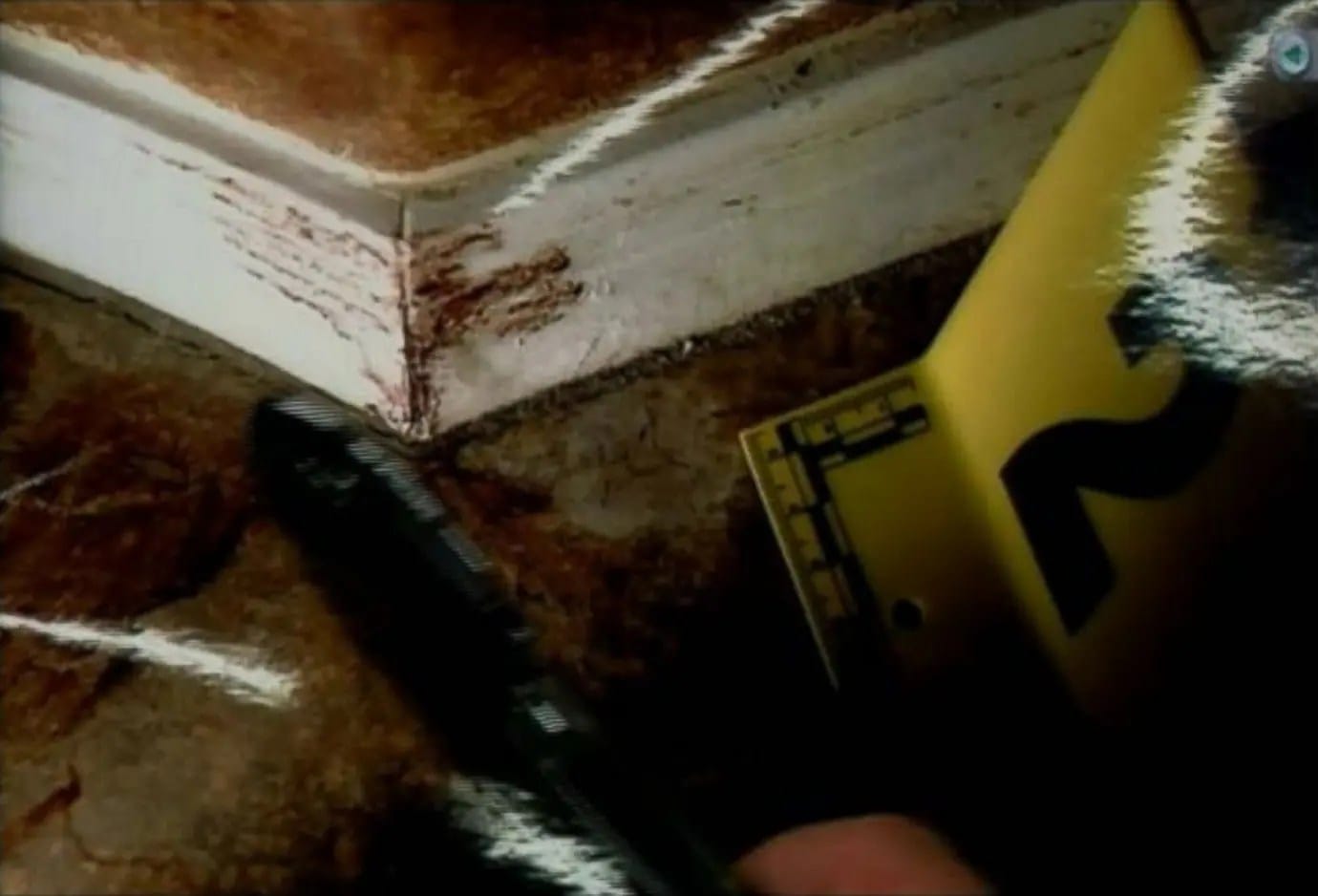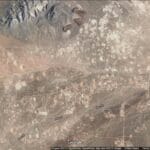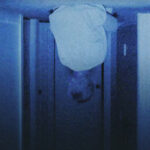Unmasking the Brutality: Inside the Jodi Arias Murder Scene
The brutal murder of Travis Alexander in 2008 sent shockwaves across America, captivating the nation with a chilling tale of love, obsession, and violence. Stepping into Alexander’s Mesa, Arizona, home on that fateful June day, one would have been met with a scene straight out of a nightmare. The air, thick with the metallic scent of blood, hinted at the horror that had unfolded. Bloodstains, like macabre breadcrumbs, painted a tragic story of a struggle – a desperate fight for life. A bloody handprint, a chilling reminder of the killer’s touch, stood out as a haunting testament to the violence.
Photos Speak Volumes: Evidence from Beyond the Grave
Amidst the chaos, investigators stumbled upon a pivotal piece of the puzzle – a digital camera. This was no ordinary camera; it held images powerful enough to send chills down anyone’s spine. The photos, believed to have been taken during the attack, offered a disturbing glimpse into Alexander’s final moments. His own camera, turned against him, became a silent witness, capturing the terror he must have faced at the hands of someone he once trusted.
The Science of Justice: Unraveling the Truth Through Forensics
In the Jodi Arias case, as in many criminal investigations, forensic science took center stage. Blood spatter analysis, like a macabre form of art, helped investigators reconstruct the trajectory of the attack, providing crucial insights into the dynamics of the struggle. Meanwhile, DNA testing, a cornerstone of modern forensic science, directly linked Arias to the scene, adding undeniable weight to the mounting evidence against her.
A Haunting Legacy: The Jodi Arias Case Today
The Jodi Arias case, even years later, continues to fascinate and disturb, raising unsettling questions about the dark side of human nature. It serves as a chilling reminder of the potential for violence that can lurk beneath the surface of seemingly ordinary relationships.
Jodi Arias Crime Scene Photos: Unpacking the Evidence and Its Impact
The photos taken at the crime scene where Travis Alexander was found were disturbing, to say the least. They showed the brutal nature of his death and became a key part of the trial. These photographs didn’t just show the aftermath; they began to poke holes in the story Jodi Arias was telling – the story of self-defense.
One of the biggest things the photos revealed was just how bad Travis’s injuries were. They challenged the idea that this could have been a simple case of self-defense. Then there was the blood. The way it was splattered around the bathroom, didn’t line up with Jodi’s story either. The photos, examined by experts, suggested a struggle, a level of violence that went beyond a simple act of self-preservation.
And then there was the camera. Damaged. It was almost as if someone had tried to hide what it had seen. But the police were able to get images off that camera – images that Jodi probably didn’t want anyone to see. There was Travis, alive, in the shower. And most damning of all, there was Jodi herself, posing in ways that suggested anything but remorse.
These photos, as shocking as they were, became a crucial piece of the puzzle, helping to paint a clearer picture of what might have happened that day. They challenged Jodi’s account, offered a glimpse into the brutality of the crime, and ultimately, played a significant role in her conviction.
The Gruesome Truth: Analyzing Key Images from the Jodi Arias Murder Scene
The Jodi Arias case, with its shocking brutality and controversial trial, left an indelible mark on the public consciousness. But beyond the headlines and courtroom drama lies a collection of images that tell a chilling story – a story that unveils the dark heart of this tragic case.
A Visual Record of Violence
The photos from the crime scene were nothing short of horrifying. They revealed the sheer brutality inflicted upon Travis Alexander – multiple stab wounds, a gunshot wound to the head, and a severed throat. The violence of his death, evident in every blood-soaked detail, painted a picture of rage and desperation that defied comprehension.
Unmasking the Truth
Arias initially claimed self-defense, but the crime scene photos soon began to unravel her story. The sheer number of wounds on Alexander’s body, the blood spatter patterns, and the lack of any significant injuries on Arias herself all pointed towards a much more sinister scenario. The photos, in their stark, unflinching detail, became silent witnesses that contradicted her claims.
A Camera’s Unsettling Testimony
A chilling twist in the case emerged from an unexpected source – Travis Alexander’s own camera. Tucked away, the camera held images that further contradicted Arias’ narrative. Some photos showed Alexander alive and well just hours before his death, presenting a stark contrast to the gruesome scene discovered later. Even more disturbing, other photos depicted Arias striking provocative poses after the murder, casting doubt on her remorse and suggesting a shocking lack of empathy.
The emergence of these photos, captured by the very man she was accused of murdering, proved to be a turning point in the case. The camera, a device often associated with capturing happy memories, instead became a repository of incriminating evidence, revealing a sinister side to the story that Arias had desperately tried to conceal.
The Jodi Arias Case: A Cautionary Tale
The Jodi Arias case, with its chilling visuals and web of deceit, continues to captivate and disturb. It serves as a tragic reminder of the devastating consequences of obsession and the dark potential that can reside within seemingly ordinary relationships.
Unlocking Evidence: How Forensic Experts Used Photos in the Jodi Arias Case
The Jodi Arias case, a story of love turned deadly, gripped the nation with its shocking brutality and the intricate web of evidence that ultimately led to Arias’ conviction. Forensic science played a crucial role in this high-profile case, but it was the innovative use of crime scene photography that provided some of the most compelling and damning evidence against Arias.
Time-Stamped for Justice
Perhaps one of the most significant pieces of photographic evidence came from an unexpected source – Travis Alexander’s own camera. The camera, later recovered by investigators, contained images that contradicted Arias’ alibi, placing her at the scene of the crime shortly before Alexander’s death. These time-stamped photos, captured by the very man she was accused of killing, became a vital part of the prosecution’s case.
Unintentional Witnesses
In a chilling twist, investigators discovered that some of the photos from the crime scene had been taken during the attack itself, likely by accident. These unintentional captures, though disturbing, provided a horrifying glimpse into the violence that unfolded that day, offering visual evidence that supported the prosecution’s timeline of events.
Data Recovery: Exposing Digital Footprints
Forensic experts went beyond the visible images, delving into the camera’s digital depths to uncover deleted photos. This meticulous digital detective work revealed attempts to hide evidence, further incriminating Arias and suggesting a calculated effort to cover her tracks.
A Visual Puzzle: Reconstructing the Crime
The crime scene photos, analyzed alongside other forensic evidence, became crucial pieces of a complex puzzle. They helped investigators establish a more precise timeline, understand the spatial relationships between objects and Alexander’s body, and ultimately, corroborate other physical evidence, such as bloodstains and DNA.
Beyond the Lens: The Power of Forensic Photography
The Jodi Arias case showcased the evolving role of photography in criminal investigations. Images, once simply used to document crime scenes, have become powerful tools for analysis, interpretation, and ultimately, the pursuit of justice. As technology advances, forensic photography will undoubtedly continue to play a pivotal role in unraveling the truth behind even the most complex and chilling crimes.
Unveiling the Visual Evidence: The Role of Crime Scene Photography in the Jodi Arias Trial
The Jodi Arias trial, a case that captivated the nation with its brutal details and the complexities of the relationship between the victim, Travis Alexander, and the accused, Jodi Arias, relied heavily on the power of visual evidence. Crime scene photos, in their stark and unsettling detail, transported jurors to the heart of the crime, influencing their perceptions and ultimately playing a significant role in the outcome of the trial.
### A Window Into a Gruesome Reality:
The photos presented during the trial were not for the faint of heart. They depicted the sheer brutality of Alexander’s murder, showcasing the multiple stab wounds, the gunshot wound, and the deeply disturbing slashed throat. These images, difficult to forget once seen, conveyed the raw, visceral nature of the crime, leaving a lasting impression on those who viewed them.
### A Timeline Constructed in Images:
Beyond their graphic nature, the photos served a critical purpose in the trial – they helped investigators establish a timeline of events. The images, carefully analyzed and pieced together, directly contradicted Arias’s claims of self-defense, revealing inconsistencies in her story and suggesting a more sinister chain of events.
### Captivating the Public, Influencing the Jury:
The Jodi Arias trial, with its salacious details and the constant media scrutiny, quickly became a national obsession. The release of the crime scene photos further fueled public fascination, sparking debate and speculation. However, the potential impact of these images on the jury’s perception of the case remained a significant concern throughout the trial.
### Defense Strategies and Ethical Dilemmas:
Arias’s defense team, acutely aware of the power of the graphic imagery, argued against showing the jury the most disturbing photos, claiming that they could prejudice the jury against their client. This strategy highlighted an ongoing ethical debate surrounding the use of such graphic content in trials – the need for evidence versus the potential for overwhelming emotional responses.
### The Legacy of the Images:
The Jodi Arias trial serves as a stark reminder of the power of visual evidence, particularly in the digital age. The photos, easily disseminated and widely shared, transcended the courtroom, shaping public opinion and sparking conversations about the ethics of disseminating such graphic content. The case continues to raise questions about the balance between transparency, privacy, and the potential impact of such imagery on our collective psyche.
Dissecting the Jodi Arias Case: Ethical Implications of Sharing Crime Scene Photos
The Jodi Arias case, a story of love turned lethal, sparked a national conversation not just about the crime itself but about the ethical considerations surrounding the sharing of graphic crime scene photos. The trial, which played out in the public eye, ignited a debate about the balance between the public’s right to know and the potential harm of disseminating disturbing images.
Sensationalism vs. Respect: Where to Draw the Line?
One of the most pressing ethical concerns surrounding the sharing of crime scene photos is the risk of sensationalizing tragedy. When graphic images are widely circulated, particularly in the media, the focus can shift from the victim and the pursuit of justice to the gruesome details of the crime itself. This can be seen as exploitative, turning a tragedy into a spectacle for public consumption.
Privacy: Honoring the Dignity of the Deceased
The release of crime scene photos, particularly autopsy photos, raises serious questions about the privacy of the deceased. Sharing such personal and often disturbing images without consent can be viewed as a violation of the victim’s dignity. It also brings into question the emotional well-being of the victim’s family, who are forced to relive the trauma of their loved one’s death.
Impact on Justice: The Potential for Prejudice
The widespread availability of crime scene photos, especially in the age of social media, can have a significant impact on the justice system. Potential jurors, exposed to graphic images before a trial, may form preconceived opinions about the defendant’s guilt or innocence, jeopardizing the right to a fair and impartial trial.
Psychological Impact: The Trauma of Exposure
Viewing gruesome crime scene photos can have a profound psychological impact on individuals. Repeated exposure to such imagery can lead to desensitization, increasing tolerance for violence. Additionally, for individuals who have experienced trauma or loss, viewing these images can be triggering, leading to anxiety, sleeplessness, and emotional distress.
The Jodi Arias Case: A Catalyst for Ethical Debate
The Jodi Arias case, with its high-profile nature and the graphic nature of the evidence, brought the ethical dilemmas surrounding crime scene photos to the forefront. The trial sparked conversations about the responsibility of the media, the potential for harm in the digital age, and the need for guidelines to protect both the privacy of the deceased and the integrity of the justice system.
Did you know that Jim Hutton and Freddie Mercury had an enduring, loving relationship that lasted for seven years until Freddie’s untimely death? Did you also hear that rumors of Joe Pesci’s death were not true?

















2 thoughts on “The Jodi Arias Murder Scene: A Chilling Look Inside the Case That Gripped a Nation”
Comments are closed.